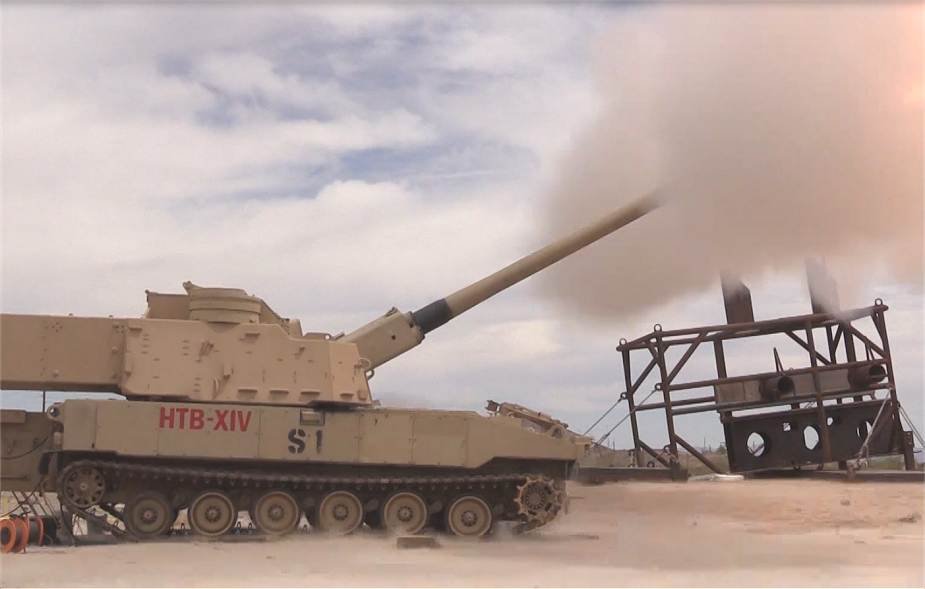
US Army with M1299 howitzer achieved a record by firing at the highest velocity
According to information published by the U.S. Army on January 6, 2022, the Extended Range Cannon Artillery (ERCA) weapon system has made headlines in recent years for its ability — as its name states, to fire at an extended range. Yet in early August 2021, the M1299 artillery weapon system made history by firing at  the highest velocity on record with this program at Yuma Proving Ground (YPG).
the highest velocity on record with this program at Yuma Proving Ground (YPG).
Follow Army Recognition on Google News at this link
The new ammunition was fired from the M1299, an improved variant of the M109A7 155mm tracked self-propelled howitzer which is the latest development of artillery system in the M109 howitzer family. During a firing test Yuma Proving Ground in Arizona in March 2019, the M1299 gun nailed targets with pinpoint accuracy at a range of 62 kilometers, offering a greater range compared to the M109A7 Paladin which has a maximum firing range of 30 km and for 40 km with the M982 Excalibur guided artillery shell for the M777 light towed howitzers.
In July 2019, US Army has awarded a contract to BAE Systems to build U.S. Army’s Extended Range Cannon Artillery prototype. Under the U.S. Army’s program, BAE Systems will increase the range and the rate of fire on the current and future M109A7 self-propelled howitzers.
The M1299 is an American prototype 155 mm turreted self-propelled howitzer developed by BAE Systems in 2019 under the Extended Range Cannon Artillery (ERCA) program. It is based on the M109A7 self-propelled howitzer and was primarily designed for the purpose of improving the M109’s effective range. The current 38-caliber turret of the M109A7 is replaced with a 58-caliber M907 L58 version to accommodate a 30-foot gun barrel from which the ERCA (Extended Range Cannon Artillery) projectile can be fired.
Citing the US Army article, while shooting far distances is desirable and part of the Army’s modernization strategy, firing at a high-velocity is also a vital element to eliminating threats through Multi Domain Transformation, in this case, increasing the range, speed, and convergence of cutting edge technologies.
“We want to get this projectile in the air and to its target as fast as possible because the targets are getting faster,” explains Paul Henderson, lead hypervelocity propulsion engineer with the Combat Capabilities Development Command-Armament Center (DEVCOM-AC).
In general, artillery systems can be more cost-efficient compared to using missiles and rockets. An artillery round can potentially complete the same mission at a fraction of the cost.
During test fires, the YPG team collects data such as high-speed video, pressure, and muzzle velocity. The projectile team monitors the projectiles then compares the data collected at the test site against the data of the model.


